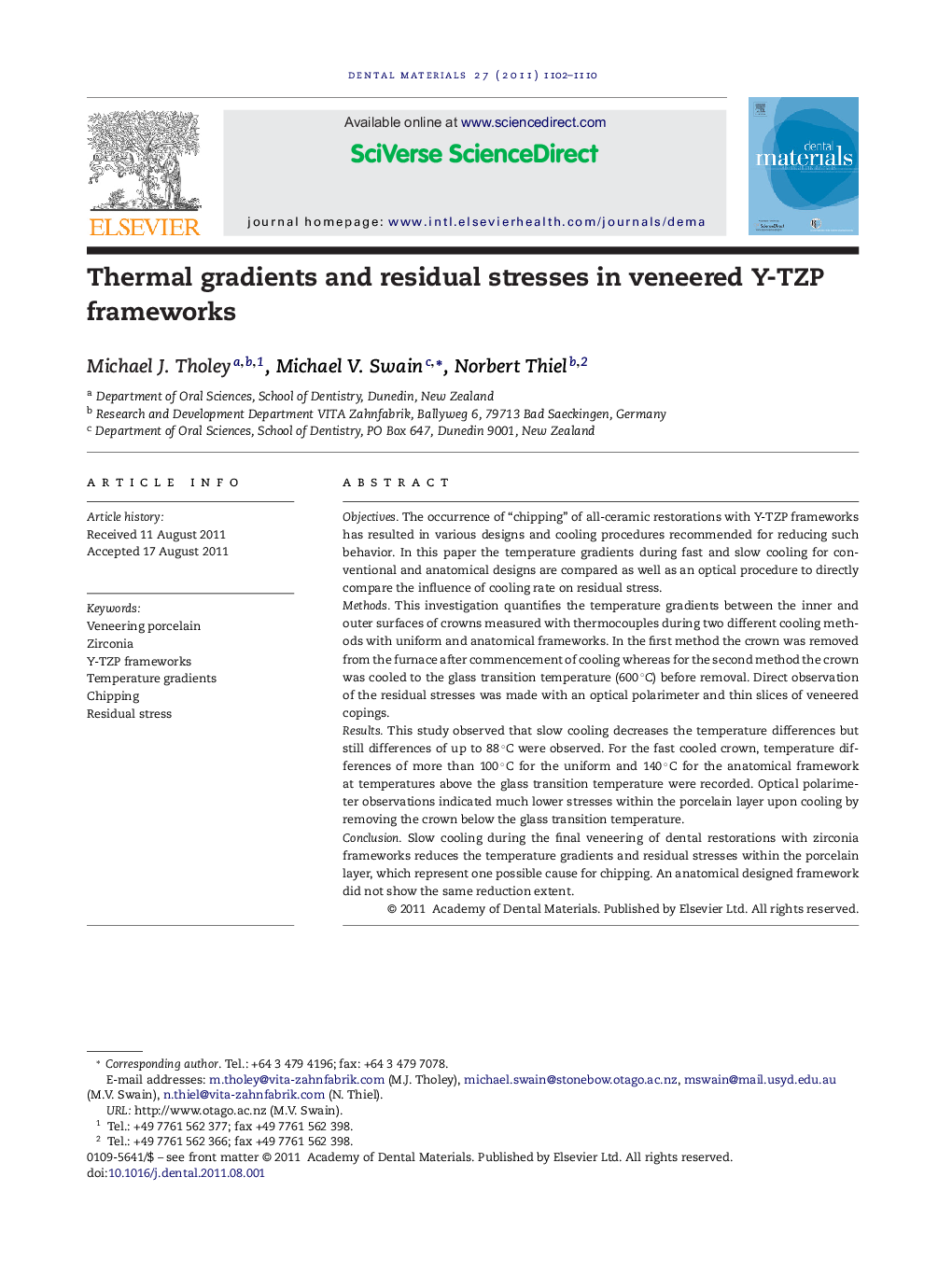| Article ID | Journal | Published Year | Pages | File Type |
|---|---|---|---|---|
| 1422120 | Dental Materials | 2011 | 9 Pages |
ObjectivesThe occurrence of “chipping” of all-ceramic restorations with Y-TZP frameworks has resulted in various designs and cooling procedures recommended for reducing such behavior. In this paper the temperature gradients during fast and slow cooling for conventional and anatomical designs are compared as well as an optical procedure to directly compare the influence of cooling rate on residual stress.MethodsThis investigation quantifies the temperature gradients between the inner and outer surfaces of crowns measured with thermocouples during two different cooling methods with uniform and anatomical frameworks. In the first method the crown was removed from the furnace after commencement of cooling whereas for the second method the crown was cooled to the glass transition temperature (600 °C) before removal. Direct observation of the residual stresses was made with an optical polarimeter and thin slices of veneered copings.ResultsThis study observed that slow cooling decreases the temperature differences but still differences of up to 88 °C were observed. For the fast cooled crown, temperature differences of more than 100 °C for the uniform and 140 °C for the anatomical framework at temperatures above the glass transition temperature were recorded. Optical polarimeter observations indicated much lower stresses within the porcelain layer upon cooling by removing the crown below the glass transition temperature.ConclusionSlow cooling during the final veneering of dental restorations with zirconia frameworks reduces the temperature gradients and residual stresses within the porcelain layer, which represent one possible cause for chipping. An anatomical designed framework did not show the same reduction extent.
